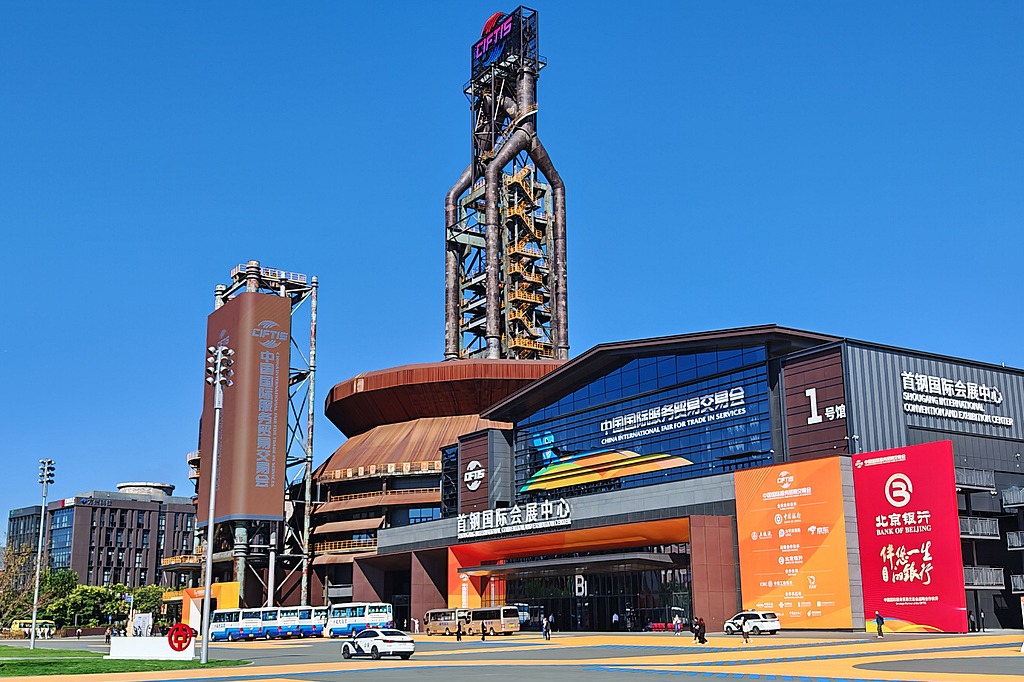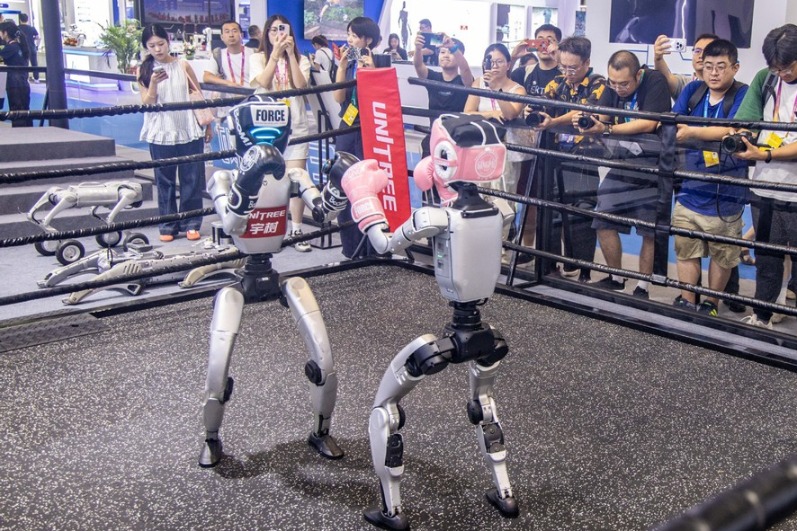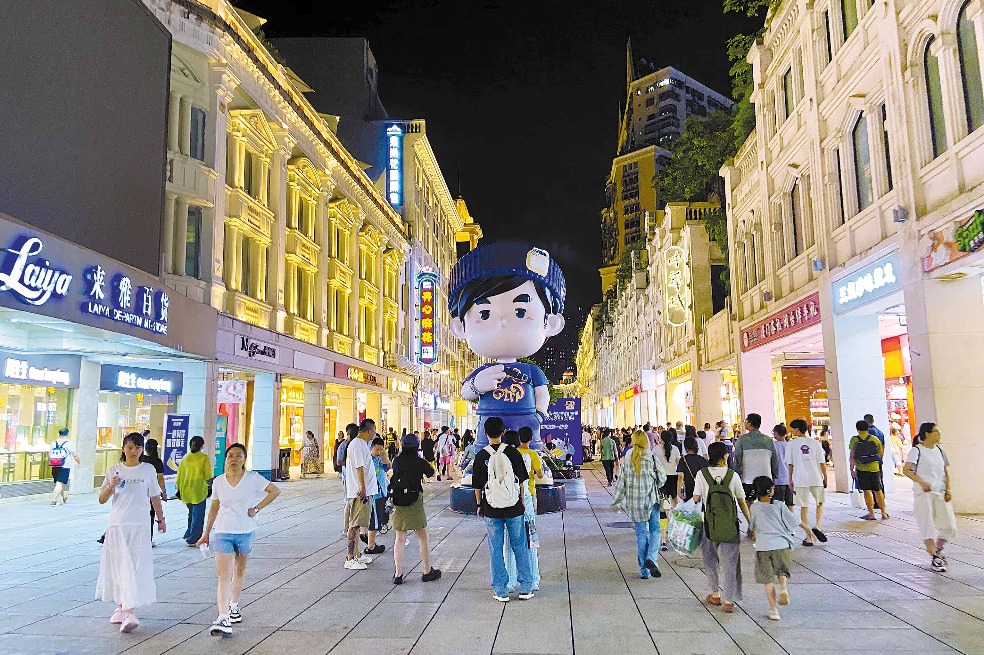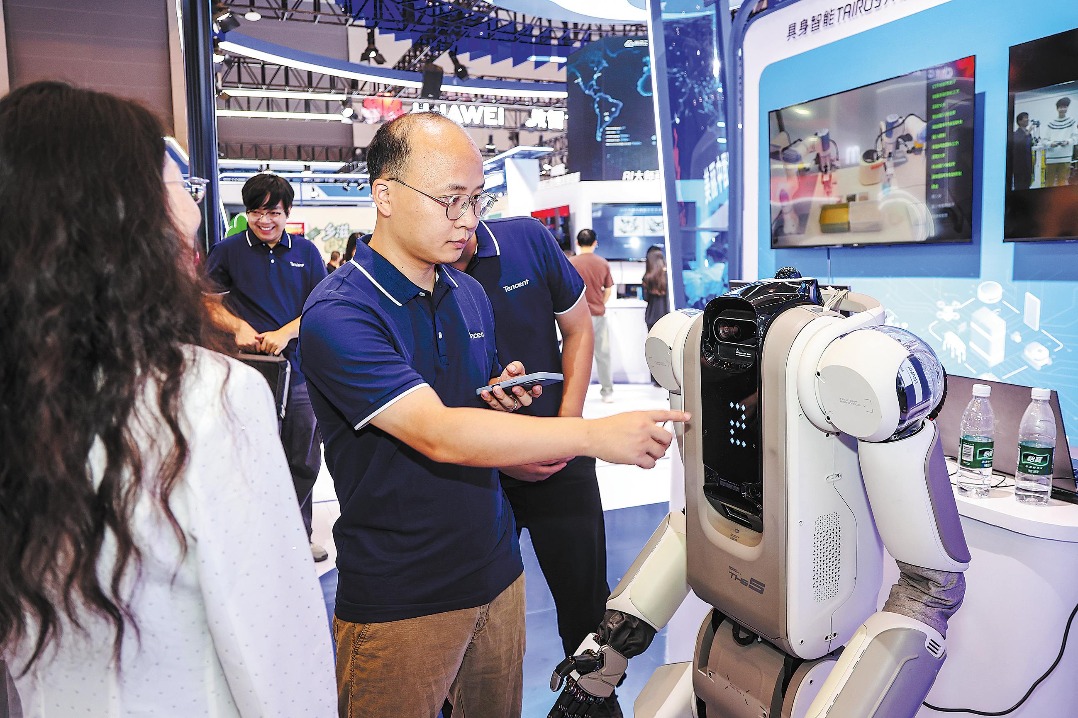Double Eleven brings smiles to retailers


Companies prolong events this year for first time, with an eye on growing product sales manifold
As far as sheer transaction volume is concerned, no shopping festival in the world comes close to China's Nov 11, or Singles Day, which falls on Wednesday this year.
Consultancy Bain & Co said the "Double 11" sales event has grown by an annual rate of 35 percent over the past five years, with the total gross merchandise value in 2019 reaching 410 billion yuan ($60.4 billion).
Sales over the 24-hour period last year were double what Amazon generated in an entire month, and eclipsed the likes of Black Friday or Cyber Monday by even larger margins.
The one-day shopping gala began as an obscure discount event 12 years ago, and has now morphed into a barometer of emerging consumption patterns in China.
In part to boost spending amid the COVID-19 outbreak, Alibaba Group-the company behind the daylong shopping frenzy-added a parallel new "shopping window "from Nov 1 to 3 with the same preferential prices in order to entice customers to place orders at an earlier stage.
Sales so far have been brisk, with GMV of 100 brands, including Apple, Huawei, L'Oreal and Haier, exceeding 100 million yuan in 111 minutes after sales officially commenced, a speed the company said "reached a new record".
Jason Ong, a director at AlixPartners in Shanghai, said the comparison with last year's sales is not entirely an apple-to-apple comparison, and this additional window is unlikely to cause a significant rise in overall GMV.
"Consumers already know that they are participating by Nov 1 and often even know what they want to buy as they would have to pay a deposit for popular items. Hence, this additional window serves to bring the transactions forward," Ong said.
In an AlixPartners survey conducted among 2,029 Chinese customers one month ahead of the shopping festival, some 39 percent planned to spend more than last year. But at the same time, 24 percent said they will only buy items when necessary.
"Careful spending is not inconsistent with spending more-if the bargains are there then even cautious spenders will purchase," he said.
The fact reinforces a growing segmentation of Chinese shoppers who have varying spending habits and different purchasing power. Jonathan Cheng, who leads Bain's retail practice in China, calls the trend "polarization".
Cheng said that Nov 11 has advanced through three stages: penetration, meaning the acquisition of new users to increase online penetration; premiumization, indicating new user growth slowing but compensated by a rise of average consumer spending; and polarization, which captures where consumers stand today.
"Polarization means that the incremental new users (mostly from lower-tier cities) are flocking to the online shopping sphere but they offset existing users' premiumization and therefore dilute overall ARPU (average revenue per user)," he said.
While higher-tier markets eventually hit the ceiling on saturation, Bain's study found that lower-tier markets continue to grow online shopper penetration as a percentage of total web users, reaching roughly 54 percent in the first quarter of 2020.
However, these new users will spend about 60 percent less than the average of existing users and 50 percent less than the lower-tier market average. Depending on the new user mix, overall ARPU could decelerate in 2020. Recognizing the new normal of Nov 11, brands and platforms will "rely on Double 11 consumer data and spending behavior to identify high-potential new products, trending brands and top categories", Cheng said.
For established and sophisticated brands like L'Oreal, the event looks set to be an avenue of customer engagement and education, rather than a simple slashing of prices.
"Of course, we are carefully preparing for Nov 11 as it is a big and symbolic festival that … also gives a bit of flavor of how the economy is growing," said Fabrice Megarbane, president and CEO of L'Oreal China. "But we have seen a lot of such festivals in the past few months. So it is one of many other shopping festivals. It's the new normal this year."
L'Oreal has always been an avid player in localizing offerings for Chinese customers, from product codesigns using consumer insights to adopting online livestreaming, arguably China's most trending method for marketing merchandise.
But this year, the French company is taking things one step further by promoting its own initiative of using recyclable and biodegradable packaging. Prior to the event, it organized a graphic design competition as part of the company's sustainability ethos and works of winners will be used as patterns on L'Oreal's Nov 11 parcels.
"Nov 11 is more like an opportunity and avenue to not just serve consumers but educate them, and let them be part of the change," Megarbane said.
Another dichotomy is the growing popularity of Chinese local brands versus their foreign peers. A poll by Bain ahead of this year's event suggested that roughly half of the respondents said they are fond of local brands, with just around 10 percent or so preferring foreign brands.
"Local brands suffered less than foreign brands in the COVID-19 period. One reason for this movement to local brands is renewed consumer interest in great value and low prices arising from economic uncertainty," said Cheng, adding that national pride amid global uncertainties is another factor.
But Si Zhenming, design director of Chinese home appliances maker Joyoung, said local brands aren't synonymous with "trading down".On the contrary, they could well serve as a symbol of a "chic" lifestyle.
"For the majority of our customers-those born after the 1990s-they spend money not just for the product per se but for a change of lifestyle. So what they really value is the experience that a brand can bring."
Joyoung has devised a self-cleaning soy milk maker that has gained traction among the younger population, who would love to embrace a healthy lifestyle but can't be bothered to be shackled to the kitchen for too long. Thousands of these gadgets were snapped up in minutes after being promoted through a livestreaming session featuring Li Jiaqi, China's most popular online influencer.
"We also invest heavily in IP collaboration, rolling out co-branded items with the likes of LINE FRIENDS to attract the eyeballs and the wallets of consumers," Si said.
Apart from this, the Bain report added that Chinese consumers also prefer familiar brands over new brands, reversing the momentum made by insurgent brands. More than twice as many consumers want to buy new and exciting products instead of repeating products purchased.
To succeed, foreign SME brands can identify a niche to build a core group of consumers and expand from there, said Ong from AlixPartners. "Oatly has been successful using this concept, likewise for Morphy Richards. The marketing cost for a wide-scale launch are far too high for smaller brands, so being focused and targeted is a key success factor," he added.
- President calls for enhanced technology cooperation
- China's Singles' Day shopping festival expected to break sale records amid COVID-19 pandemic: UK media
- Forum: innovation key to lift global economic gloom
- Schott AG to increase production capacity in China
- Not all $14b spent on election was worth it



































